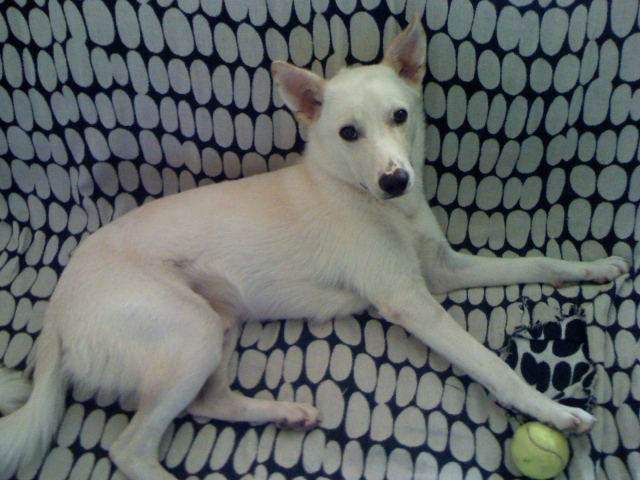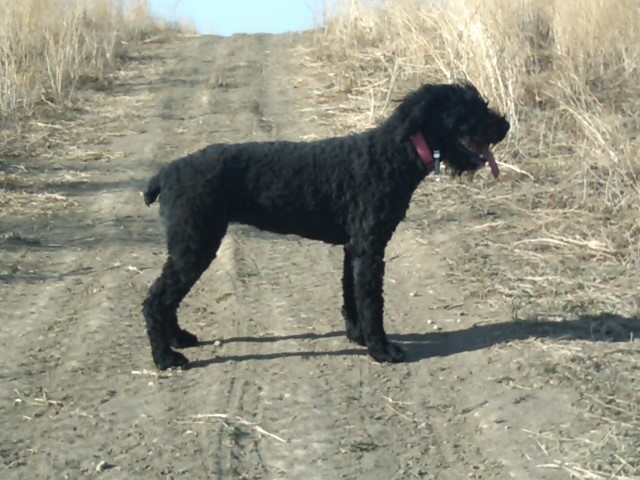Questionhi
I have had to resend this question because I put wrong e-mail details in! We acquired a three year old daschund from a previous owner who mistreated it to a certain extent. This owner also taught it to bark at everyone that came to the house. We have a situation now where even when we are on our own, the minute we stand up the dog barks continuously!! Sat down, he's okay. When we have visitors it is a nightmare. Everybody walking around, it just ends up in a cacophony of noise!! Can you help?
AnswerYou don't mention how long you've had this dog. Certain problem behaviors (such as over barking, as you describe) take a few months to self extinguish, providing no reward is offered when the dog exhibits them. Doxies BARK. It's not likely this behavior was deliberately trained. But it certainly wasn't managed or in any way brought under control. You have to do two things: first, train your dog using positive reinforcement to perform one solid obedience command (such as "sit", but use a different word since that one may have been polluted by the former owner.) This should take (with several short sessions a day) approximately three weeks. To learn about positive reinforcement training you can go to Karen Pryor's web site and/or purchase Paul Owen's book, "The Dog Whisperer" (NOT Cesar Milan!) This is a humane method which engages the dog's intellect and teaches him to make choices for reward.
The second thing you can do (while working on the first) is to capture the barking behavior. Since your dog is barking a great deal, this won't be difficult. Associate a word to the behavior (i.e., "crunch"). Set the dog up: stand up in the room (since this apparently sets him off) and at his first bark say Crunch (or any other unique word you choose) and sit down immediately. Repeat this five to ten times in a row. From that point on, totally ignore the barking unless you are planning to associate the word Crunch. Within several days, the dog will have strongly associated the word Crunch with his barking response and he will have been rewarded by your sitting down (since your standing overexcites him, apparently.) Now you can try this word when it's least expected: while doing anything with the dog nearby and watching you, say Crunch. If you see the dog perk up (and especially if the dog BARKS), food reward (have a small tidbit in your hand of something good, like cheese.) Walk away, repeat; walk away, repeat. A few hours later, try again. If the dog does NOT bark, go back to your original exercise as explained above. Once the dog has learned to bark on command, you have control over the behavior. This should correspond with the time it has taken you to train and shape a good solid "sit" to your new command for that behavior. Now you have two tools: command for bark (crunch) and command for "sit". A dog cannot concentrate and make a choice when barking. Give the dog your command for Crunch, reward his response, then tell him to 'sit" and jackpot reward that behavior.
While you are training, prevent the dog from greeting visitors!! You don't want to feed the anxiety that is causing him to bark. If the dog barks outside of his training scenario, IGNORE IT completely. Turn your back to him (or have visitors turn their backs) or leave the room (putting a closed door between you and the dog for a minute or two.) Because barking on command will become so much more rewarding than barking at random (and being ignored!), the dog will choose to bark on command. Of course, there will be exceptions! If someone rings the bell, knocks, unexpectedly walks past the house, etc., the dog will bark because that's what dogs do! However, once the behavior has been captured (trained), you will be able to quiet him with a simple "QUIET!"

 Dog walking problems
Question
Snickers
I have been trying to train my dog SN
Dog walking problems
Question
Snickers
I have been trying to train my dog SN
 Nightmares?
Question
Beethoven
Hi Melissa, Ive had my very h
Nightmares?
Question
Beethoven
Hi Melissa, Ive had my very h
 Agressive 1 yr old mini goldendoodle
Question
our millie
My husband and I got our min
Agressive 1 yr old mini goldendoodle
Question
our millie
My husband and I got our min
 I was riding my bicycle when my 1yr old Bouvier bit my leg
Question
Pup
Hello, I have a 1yr old intact Bouvier bit
I was riding my bicycle when my 1yr old Bouvier bit my leg
Question
Pup
Hello, I have a 1yr old intact Bouvier bit
 Dog light and shadow chasing
Question
Jenni
My 3 year old Cavalier King Charles Span
Dog light and shadow chasing
Question
Jenni
My 3 year old Cavalier King Charles Span